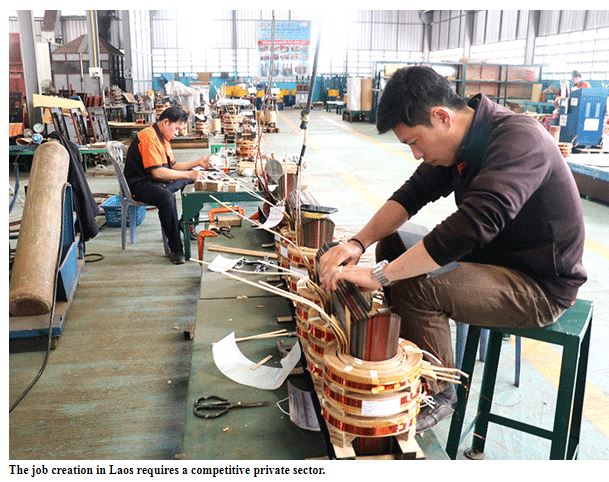Job creation the key for Laos: World Bank
Despite robust economic growth in Laos, there has been limited creation of employment opportunities, according to a recent World Bank report.
This is largely because economic growth has been driven by capital-intensive sectors such as mining, energy and construction, which have not created sufficient jobs to meet existing demand.
The Lao PDR Systematic Country Diagnostic 2021 Update highlighted how jobless growth prevents households from using human capital and benefiting from economic growth.
“The majority of workers remain trapped in low-paid, low-quality jobs, either as self-employed or unpaid family workers, especially in agriculture. Jobless growth disproportionately affects poor and vulnerable groups, leading to higher inequality which can fuel social instability,” the report stated.
“A more inclusive growth pattern will require improvements in the business climate, socio-economic infrastructure, skills development, and a well-functioning labour market.”
The creation of more and better jobs requires a competitive private sector. Improved regional and domestic transport connectivity will enhance access to international markets and facilitate integration in global and regional supply chains.
“Laos needs economic growth based on job-creation, rather than on borrowing and the sale of natural resources,” World Bank Group Country Manager for the Lao PDR, Alex Kremer, said.
“The immediate priority is to increase state revenues. Otherwise, with debt payments growing each year, there will be less money available to invest in education, skills, local infrastructure and health – the sources of healthy economic growth.”
Successful resource-rich countries effectively transformed their natural capital into human capital.
In Laos, the agriculture and forestry sector provides over 60 percent of total employment. Around two-thirds of the rural population rely on forests for food, fuel, fibre and medicine, and over 39 percent of rural family income is derived directly from non-timber forest products, according to the World Bank.
Even though hydropower development has driven growth in the industry sector, this has created few jobs, while output in job-creating sectors has grown slowly.
Between 2012 and 2018, the wholesale and retail trade sector shed the most almost exclusively self-employed workers, about 76,000 in total.
Although some of these workers might have switched to the hospitality sector where some jobs were created, many have left the workforce altogether.
Unemployment increased from 4 percent in 2012 to 16 percent in 2018. The competitiveness of the manufacturing sector has eroded since the early 2010s, as labour productivity did not keep up with rapidly rising labour costs and squeezing manufacturing firm profitability.
The World Bank report recommended that Laos needs to boost job creation through a more dynamic private sector and better connective infrastructure.
It’s also essential for Laos to improve the labour market, education and health services help Lao people gain access to job opportunities.
Source: https://www.vientianetimes.org.la/freeContent/FreeConten146_Job_y22.php


 Thailand
Thailand




